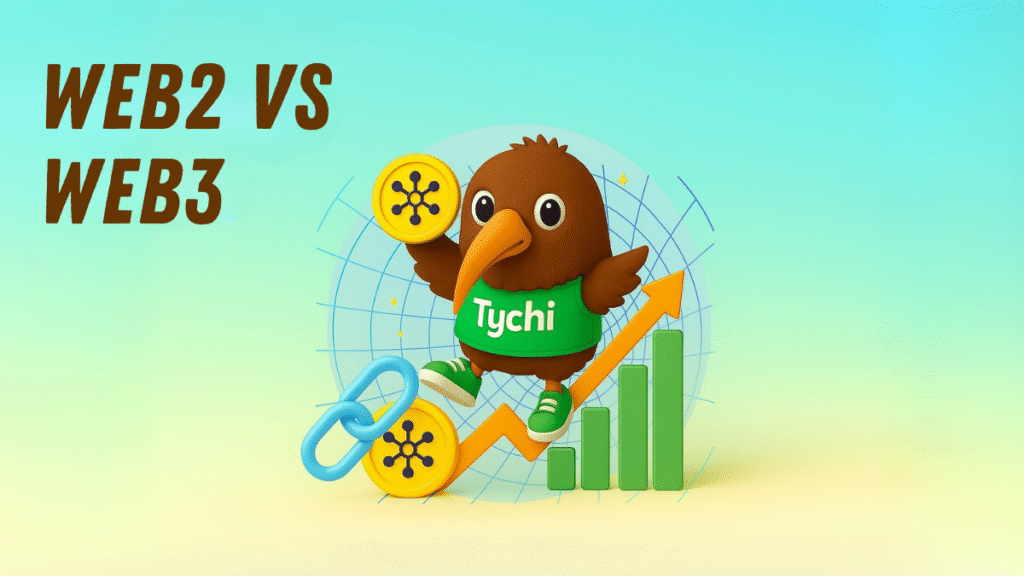
As the internet continues to evolve, so do the structures that govern how we interact online. Web2 brought remarkable advancements, but it also introduced serious concerns around ownership, privacy, and control. Web3 aims to solve many of these issues. This post explores the shift from Web2 to Web3 — what’s broken, and how it’s being fixed.
Table of Content
- The Web2 Model Limitations
- Web3: A Decentralized Response
- A More Equitable Digital Economy
- Challenges and the Road Ahead
The Web2 Model Limitations
The internet has undeniably transformed how we engage with the world. Web2, the version of the internet that emerged in the early 2000s, has fundamentally reshaped how we live, work, and connect. It gave rise to user-generated content, social networking, and interactive platforms that operate at massive scale. Yet, beneath the surface of this convenience lies a deeper issue: users often do not own their content, data, or digital identity. Instead, they function within ecosystems dominated by centralized corporations that dictate the rules of engagement.
These entities determine what is seen and what remains hidden. They moderate visibility through opaque algorithms, enforce terms of service that can change without warning, and monetize content that users create—often without rewarding them in return. The value generated by the people using the internet is frequently captured by a small number of gatekeepers. As a result, those who don’t technically “own” the infrastructure but power it with their participation are often left out of its economic benefits. This imbalance underscores a critical flaw in the Web2 model—one that Web3 seeks to correct.
Web3: A Decentralized Response
Web3 represents an effort to correct this imbalance by redistributing power and ownership back to the users. At its core, Web3 is about regaining control of one’s online presence through decentralized technologies like blockchain, smart contracts, and decentralized applications (DApps). These technologies enable trustless interactions, removing the need for central intermediaries and allowing users to directly manage their digital lives.
In this emerging system, individuals can truly own their digital assets—ranging from cryptocurrency and NFTs to personal data and identity. They can participate in decentralized governance through DAOs (Decentralized Autonomous Organizations), shaping the future of the platforms they use. Web3 users can also move seamlessly between applications and platforms without losing control of their data or compromising their privacy. The emphasis is clear: participation over permission, and ownership over access.
A More Equitable Digital Economy
This decentralized shift opens up new possibilities for a fairer and more inclusive digital economy. In the Web3 model, creators, developers, and users can monetize directly, earning value from their contributions without relying on centralized platforms to distribute rewards. The removal of intermediaries allows for a more transparent and equitable distribution of value.
Open-source innovation is not only welcomed but encouraged, creating opportunities for anyone with skill and vision to build, contribute, and benefit—without seeking approval from corporate gatekeepers. Unlike the extractive models of Web2, where a few entities profited most, Web3 aspires to cultivate ecosystems where value is shared more fairly among all participants.
Challenges and the Road Ahead
While the vision of Web3 is bold and transformative, the journey is still in its early stages. Significant challenges remain. The technology behind Web3 is still developing, and the learning curve for new users is steep. Concepts like managing private keys, using wallets, or participating in DAOs require education and adaptation. Furthermore, security at scale remains an ongoing concern, particularly as these systems grow in complexity and reach.
However, the direction forward is clear. While Web2 delivered speed, scale, and convenience, Web3 is laying the groundwork for an internet that emphasizes agency, fairness, and true ownership. The evolution of the web is not just a technological upgrade—it represents a societal shift toward a more inclusive, transparent, and accountable digital future.